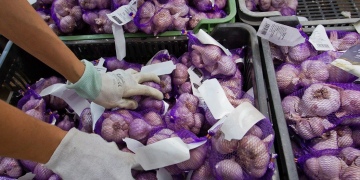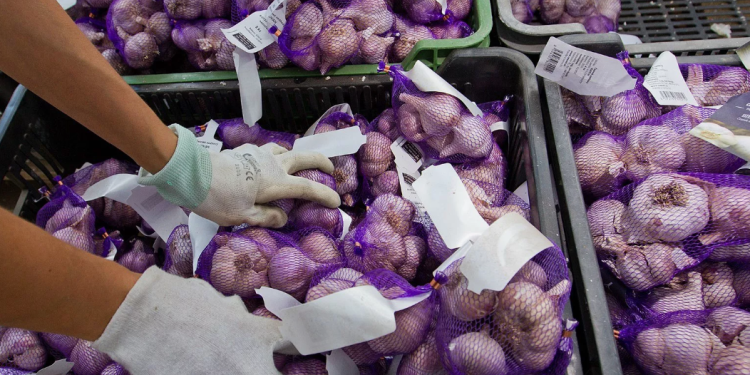#Garlictrade #Indianagriculture #globalimpact #garlicproduction #exporttrends #pricesurge #agriculturalresilience
Garlic is more than just a staple ingredient in Indian cuisine; it’s a vital component of the country’s agricultural landscape and international trade. India has emerged as a significant player in the global garlic market, with its aromatic garlic varieties in high demand worldwide. In this article, we will take a deep dive into India’s garlic trade, examining its evolution, economic significance, production distribution, export trends, and the projected price surge.
India’s Garlic Production Landscape
As of the latest data for the year 2022-23, global garlic production reached a staggering 30.75 million metric tons (MT). Unsurprisingly, China dominated this production at 75.79%, with India contributing a noteworthy 2.91 million MT, accounting for 9.46% of the global total. Following India were countries like Bangladesh (1.52%), South Korea (1.26%), and Egypt (1.04%). India’s garlic cultivation is a collaborative effort across various states, with Madhya Pradesh leading the way at 62.85%, followed by Rajasthan (16.81%), Uttar Pradesh (6.57%), Gujarat (3.29%), Punjab (2.66%), and even Assam (2.01%). This diverse distribution showcases India’s ability to leverage different agro-climatic conditions and local expertise.
Resilience in Production
A closer look at the agricultural production trend from 2017-18 to 2022-23 reveals resilience despite fluctuations. Production experienced a dip in 2018-19, but it rebounded in subsequent years. Factors influencing these fluctuations include climate variations, market dynamics, and government policies. Notably, the years 2020-21 and 2021-22 witnessed increased production levels despite numerous challenges. This reflects the agricultural sector’s adaptability and the integration of technological advancements, highlighting India’s pivotal role in the global garlic export market.
Dynamic Export Trends
India’s garlic exports from 2017-18 to 2021-22 have been dynamic, marked by fluctuations attributed to shifting global dynamics and disruptions such as the COVID-19 pandemic. Despite these hurdles, the industry displayed resilience, underscoring India’s importance as a garlic exporter. The country’s garlic has made its way to markets in the United States, the United Arab Emirates, Saudi Arabia, and beyond, further strengthening its position in the global garlic trade.
Price Projections
For those involved in garlic cultivation and trade, the future looks promising. The garlic market is projected to remain bullish for the next few months. The consistent demand for garlic, which has exceeded 22,000 MT since 2017, is expected to provide support for prices. Based on seasonality and market dynamics, prices could potentially surpass 8,500 in the coming 2-3 months, offering optimism to farmers, agronomists, and agricultural engineers alike.
India’s garlic trade is a dynamic and influential sector in the country’s agricultural landscape. With a diverse production distribution, adaptability in the face of challenges, and strong export potential, India’s garlic industry continues to thrive. As prices surge, it’s an exciting time for those involved in garlic cultivation and trade, reflecting the global appreciation for Indian garlic’s quality and aroma.































